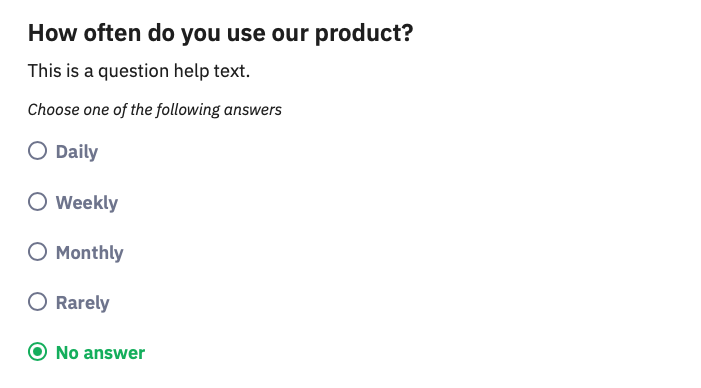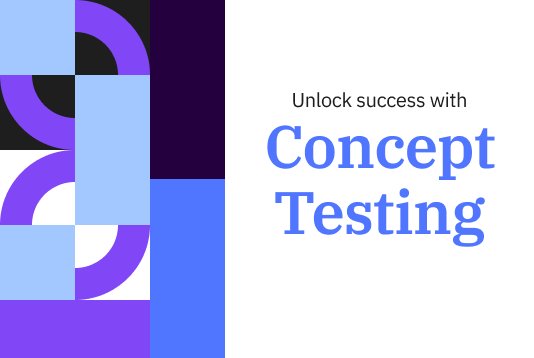Table content
Ever launched a new product, only to watch it flop? Or rolled out an ad campaign that just didn’t click? If so, you already know the pain of skipping concept testing.
Just like a splash of lime can make your mojito just right, concept testing can add the perfect zest to your business decisions.
Let’s dive into how you can validate ideas, refine products, and fine-tune messaging with smart, data-informed decisions.
What is Concept Testing?
Concept testing is the process of evaluating an idea, message, or product with real people before launching it into the wild. Whether it’s a fresh logo, a snappy tagline, or a groundbreaking product, testing ensures your concept resonates with your audience before investing big bucks in development.
By leveraging LimeSurvey’s flexible survey tools, you can gauge reactions, compare multiple options, and uncover hidden preferences. Think of it as a crystal ball for your ideas—minus the mysticism and with a lot more data.
Get started with a free LimeSurvey template!
Why Concept Testing is a Game-Changer
Here’s why concept testing can actually be amazing for your business, and is a step you don’t want to skip:
- Saves You Money: Testing concepts early prevents costly redesigns and failed product launches.
- Boosts Customer Appeal: Why guess what your audience wants when you can ask them directly?
- Strengthens Your Brand: A well-tested concept aligns with audience expectations, reducing the risk of brand missteps.
- Increases Team Buy-in: Hard data is more convincing than gut feelings when rallying stakeholders.
Popular Concept Testing Methods in LimeSurvey
LimeSurvey’s powerful survey-building capabilities let you implement four proven concept testing methods:
1. Comparison Testing
Got multiple ideas? Put them head-to-head! Ask respondents to rate or rank different concepts to find the clear winner. This is perfect for testing ad variations, product designs, or branding elements.
2. Monadic Testing
Want in-depth feedback on a single concept? Show one idea to a group of respondents and get detailed insights. This works well for pricing strategies, messaging, or packaging designs.
3. Sequential Monadic Testing
Rotate multiple concepts among different groups and collect feedback on each. This helps minimize bias and gives a well-rounded view of how each concept performs.
4. Proto-Monadic Testing
Combine sequential monadic and comparison testing. Respondents first review concepts individually, then pick their favorite. This method is great for determining which elements stand out the most.
Designing a Winning Concept Test with LimeSurvey
Ready to roll out your own concept test? Follow these steps:
Step 1: Define Your Objective
Ask yourself: What do I want to learn? Are you testing appeal, usability, or pricing? A clear goal makes survey design a breeze.
Step 2: Choose Your Survey Format
Likert Scales: Gauge sentiment with questions like, “How likely are you to purchase this product?” Ranking Questions: Let respondents order concepts based on preference.
Multiple Choice & Open-Ended Questions: Collect both structured data and rich, qualitative insights.


Step 3: Select Your Audience
Use LimeSurvey’s advanced sampling options to target your ideal customer base. The right audience ensures relevant feedback.
Step 4: Analyze and Optimize
Once responses are in, you can export your survey into an Excel file to help identify trends, preferences, and areas for improvement. Use this data to refine your concept before launch.
Concept Testing in Action
Imagine you're launching a new probiotic drink aimed at health-conscious consumers. You have three packaging designs: one minimalistic, one vibrant and playful, and one with a natural, earthy feel. Using comparison testing, you ask survey participants which design appeals to them the most and why.
Through monadic testing, you gather feedback on whether the design communicates health benefits effectively. Finally, a proto-monadic test lets respondents examine each design separately before choosing their favorite.
Results show that the vibrant and playful design is eye-catching but lacks credibility. The earthy design, however, conveys trust and health benefits—making it the winner! With this insight, you tweak the packaging before launching, ensuring a stronger connection with your audience.
The Power of Name Testing
Your product’s name is just as crucial as its design. The wrong name can lead to confusion or, worse, customer disinterest. LimeSurvey makes name testing easy, helping you assess:
- Memorability: Is the name easy to recall?
- Relevance: Does it communicate the product’s purpose?
- Emotional Response: What feelings does it evoke?
Did you know Google was originally called BackRub? Aren’t we glad they changed the name! And before Tinder became, well, Tinder, it was first named Matchbox. Name testing helped these brands refine their identities and become iconic household names.
For your hypothetical probiotic drink, you test three names: GutGlow, BioBoost, and FloraFuel. Using ranking surveys, participants rank their favorites, while Likert scale questions gauge how well each name conveys health benefits. This data into scores on credibility and appeal will help to give you confidence in your brand name choice.
Test Smarter with LimeSurvey
Concept testing doesn’t have to be complex. With LimeSurvey, you can effortlessly design surveys, gather insights, and optimize your ideas.
So, next time you’re cooking up a new concept, don’t leave it to chance. A little splash of concept testing can make all the difference.
Get started with LimeSurvey to make sure your next big idea ticks all the right boxes!




